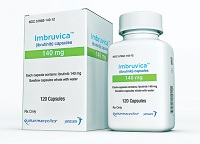 |
For some industry watchers, AbbVie's ($ABBV) $21 billion pact to buy Imbruvica-maker Pharmacyclics ($PCYC) begged a lot of questions. For instance, after the company agreed to pay a price that steep--or "lofty," "staggering," and even "astronomical," to use analysts' words--how much would Imbruvica actually rack up in peak sales? And where would those sales come from?
The Illinois pharma proposed answers to those questions and more on a conference call last week. For starters, it predicted $7 billion in peak sales to AbbVie--a number that calculates out to about $11.5 billion to $12 billion in end-user sales, Evercore ISI analyst Mark Schoenebaum figures. While AbbVie CEO Richard Gonzalez pointed out on the call that that peak number also depends on the performance of marketing partner Johnson & Johnson ($JNJ), he called ISI's prediction "reasonable."
So if the blood cancer fighter is headed for growth, where will it all come from? The way AbbVie sees it, about a quarter will come from continued penetration in the drug's three approved indications: previously treated chronic lymphocytic leukemia (CLL) and mantle cell lymphoma, and untreated Waldenström's macroglobulinemia. The drug could expand into other B-cell malignancies, too--like multiple myeloma--but it's far from a sure bet, Gonzalez warned.
That possibility didn't "drive much of the valuation of the transaction. But if that were to hit, I would say that would be a significant upside to the model that we've seen so far," he said.
 |
| AbbVie CEO Richard Gonzalez |
Instead, a third of the expansion--around 30%, Gonzalez said--will come from moving into earlier lines of therapy, which boast larger groups of patients who stay on treatments for longer periods of time. And doing that--by snagging a first-line nod for Imbruvica in CLL, for example--has "a very high probability of success based on the data that we've seen," he told investors.
Of course, no matter how many indications AbbVie is dealing with, it will need its sales force to help it reach those numbers. Right now, Gonzalez said, both J&J's Imbruvica rep army and the one the Abbott ($ABT) spinoff will inherit from Pharmacyclics are roughly the same size, and there's a bit of overlap when it comes to the physicians they call on.
That'll change, though, if and when AbbVie rolls out blood cancer prospect ABT-199, a Phase III med it believes can help fuel Imbruvica sales, and vice versa. On the call, EVP of R&D Mike Severino called the two drugs' mechanisms "very complementary," noting that they could be combined--and sequenced--in various ways that could address a "wide range of hematologic malignancies."
To make sure docs get the picture on that drug--which AbbVie is developing with Roche's ($RHHBY) Genentech unit--AbbVie will be inviting more reps to the party. "We would anticipate that we would add more people in order to fill that need for capacity," Gonzalez said.
- see the AbbVie call transcript
Special Report: Top 20 orphan drugs by 2018 - Ibrutinib